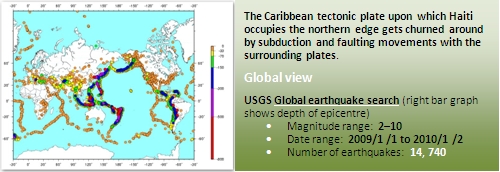-
UNISDR and UNICEF have together produced an educational kit for children called “Let’s learn to prevent disasters!”. It includes the board game 'Riskland' whereby players learn about what they can do to reduce disaster impacts by answering questions and advancing along the board’s winding path.
Images, lectures, videos, animations and maps are available at the USGS Education Resources page.
A student suitable explanation of the Science of earthquakes prepared by the USGS. It includes clear diagrams and images.
A video showing an American middle school teacher using a slinky to model P and S waves in the classroom prepared by the Incorporated Research Institutions for Seismology.
The BBC Bitesize website provides a clear description of the different types of plate boundaries suitable for high school students.
Another useful BBC Bitesize page supplies a case study of the 2010 Haitian earthquake that presents a close up look at the impacts of and responses to the disaster.
Michigan Technological University has a detailed description of seismic waves that is suitable for advanced students.
The following teaching activity guides students to use P and S waves to understand how scientists have determined the structure of the Earth.
The British Geological Society has a great site on Earthquakes that includes suggestions for classroom activities.
Wikipedia provides a concise page of the Caribbean plate’s boundary types, geography and origin.

